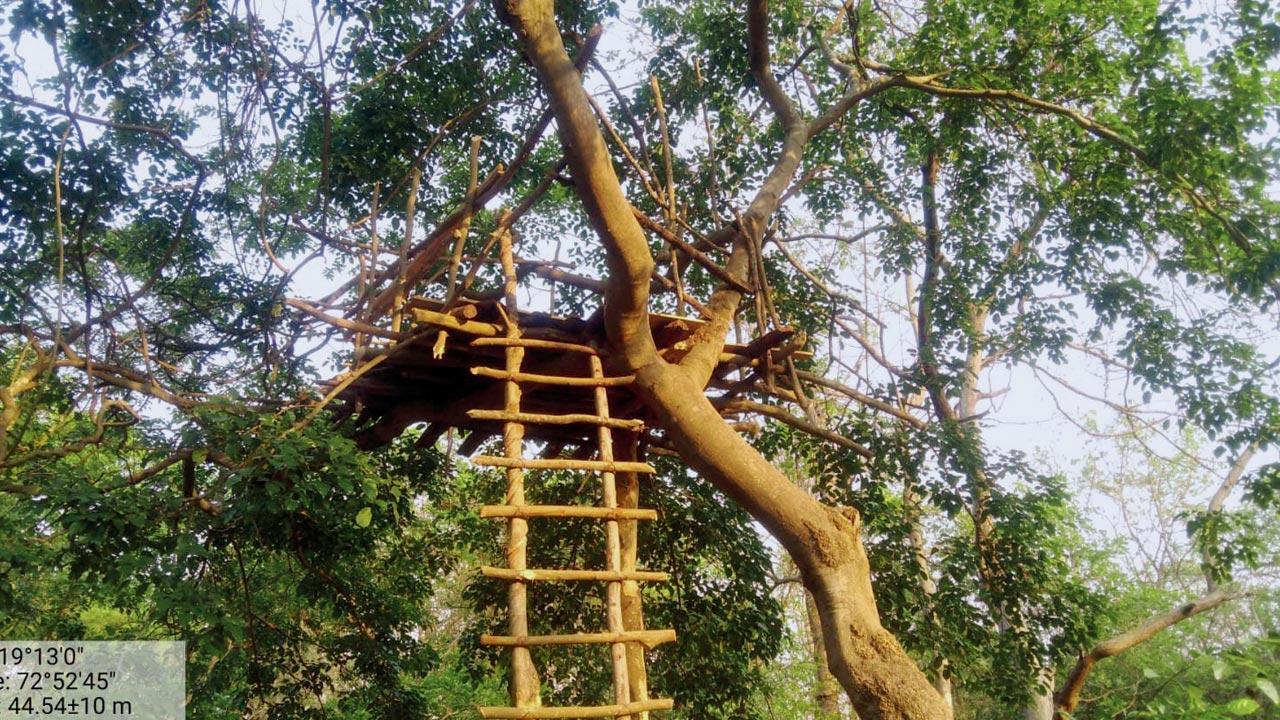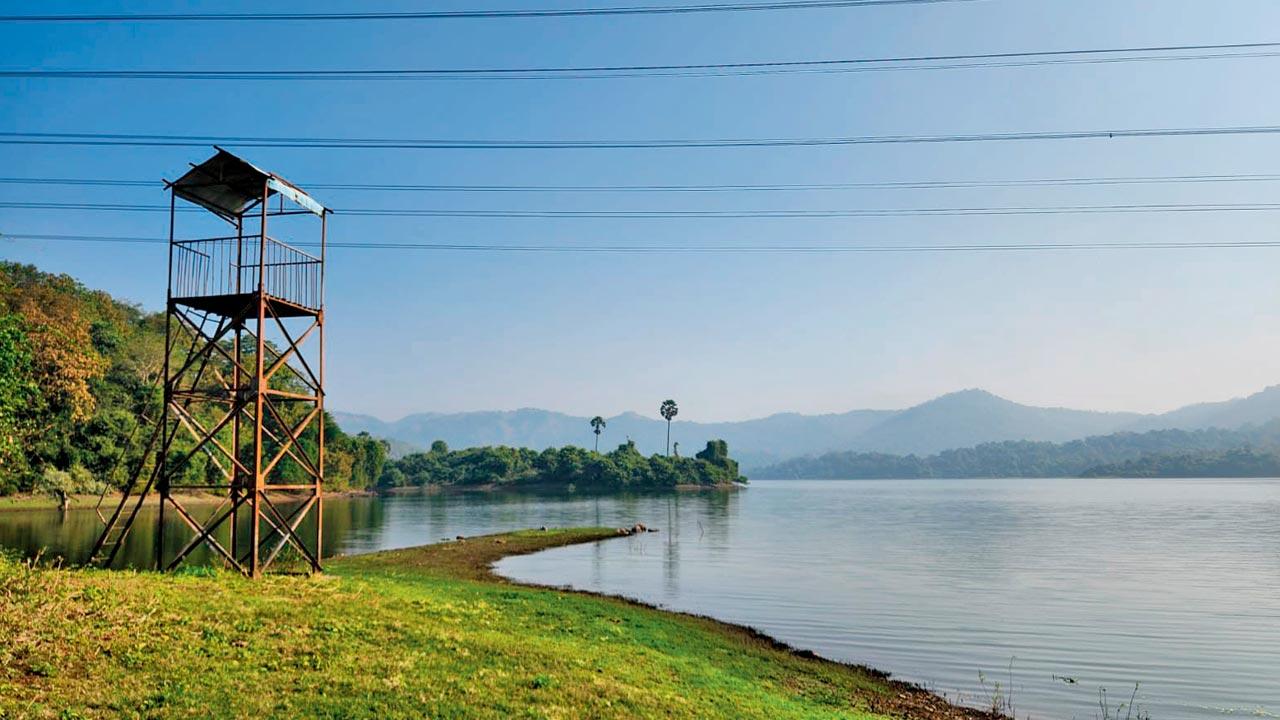The annual waterhole census took place at the Sanjay Gandhi National Park and the Tugareshwar Wildlife Sanctuary

A machan in the core zone of SNGP
Following the waterhole census at Sanjay Gandhi National Park (SNGP), and Tungareshwar Wildlife Sanctuary on the Buddha Poornima, a total of 415 species of animals were spotted in the 12-hour-long activity. The species that were spotted included leopards, crocodiles, barking deer, spotted deer, wild boar, and several species of birds.
An official from SGNP said, “We are yet to compile the entire data but as per the data from Krishnagiri Upvan (KUB) range and the core area of Tulsi range, a total of 415 species of wild animals (mammals, reptiles, and birds) were spotted by the participants who took part in the overnight animal watch activity between 5 pm and 7 am. A total of five individual leopard sightings took place in the Tulsi range, along with seven crocodile sightings near Tulsi lake area.”
 Wildlife lovers were seated on machans to spot the wild animals
Wildlife lovers were seated on machans to spot the wild animals
The mammals that were spotted include five leopards, 115 spotted deer, four barking deer, 12 sambars, nine wild boar, 12 grey langurs, five rhesus/bonnet monkeys, 13 bats, 16 palm squirrels, one Asian palm civet, one small civet cat.
The reptiles that were spotted include seven crocodiles, seven barking geckos, and one rat snake. In birds, 26 owls, nine-night jars, 118 ducks and water birds, and 54 other species of birds were spotted.
On the night of Buddha Purnima, the waterhole census is carried out across the country at various national parks, wildlife sanctuaries, and tiger reserves. This is because spotting the animals on a full moon night is easier. Those who take part as volunteers are made to sit on machans, from where they count the animals that visit the nearest waterholes. Forest guards also sit on the machans during the census, and the volunteers are not allowed to get down in the middle of the exercise, as that might lead to man-animal conflicts.
SGNP has one of the highest densities of leopards in the world and leopard is the apex predator. It may be noted that last year, 433 animals were sighted during the overnight animal watch activity, which included 243 mammals.
5
No. of leopards spotted
 Subscribe today by clicking the link and stay updated with the latest news!" Click here!
Subscribe today by clicking the link and stay updated with the latest news!" Click here!










